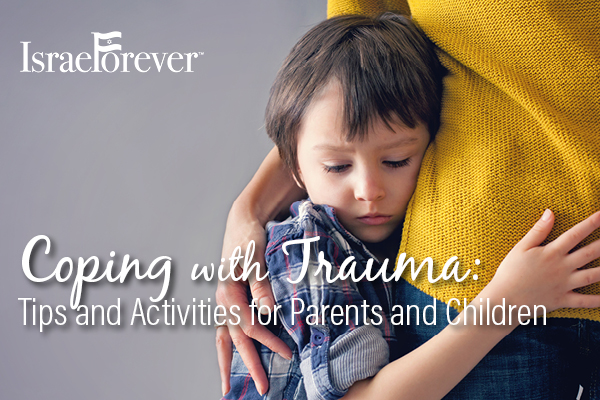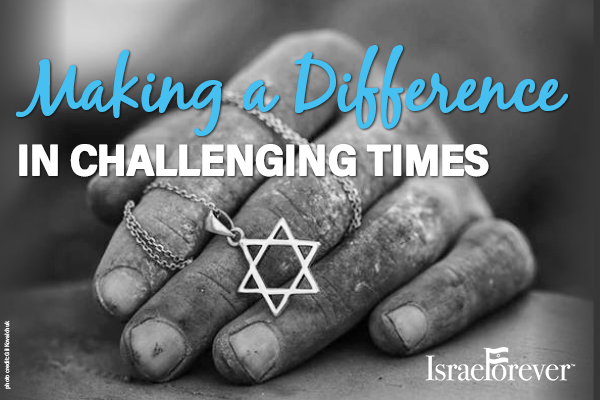100 days had passed and I felt myself compelled - I could not put it off any longer. I must go, I must witness, I must think of how I could be a part of what I felt - in the depths of my soul - was a calling, a connection with the memory work that needs to be done.
Only official groups and “influencers” had yet to be allowed to enter the zones of destruction. The communities, the homes, the beds of blood. The need to protect the integrity of the space was challenged by the need to attest to the atrocity. The denial was almost immediate, and every shred of evidence and personal witness was essential to ensuring that Israel’s story would be told.
Social media was immediately filled with videos of the destruction, eyewitness testimonies, visitor accounts, all right alongside videos of the abuse and murder of October 7. We lived the experience vicariously through their images and words, and our own nightmares and pain.
But nothing can compare. And nothing can replace the experience of standing on those grounds and confronting the comparisons that will inevitably be made.
The morning was cold, the dark clouds hovering over the deep orange sunrise, casting an eerie glow over the forest on the horizon. I was prepared to see, feel, hear, smell, think, inherit every morsel that would be passed on to me. The day began with the hard news of 24 soldiers having fallen that morning and we met up with Zemer Margolin, our educator whose sensitive nature and personal connections with the events of October 7 and the Beeri community was a true asset to our collective experience.
As we drove South, our discussions were filled with questions. We talked openly about why a witness journey was so important, and how we could incorporate the importance of historical relevance in the actual experience of inheriting the stories and pain we were about to encounter. He shared how he found himself in this unique position, as a tour guide and educator having to confront the challenges of this new “side” of “tourism” - the witness experience.
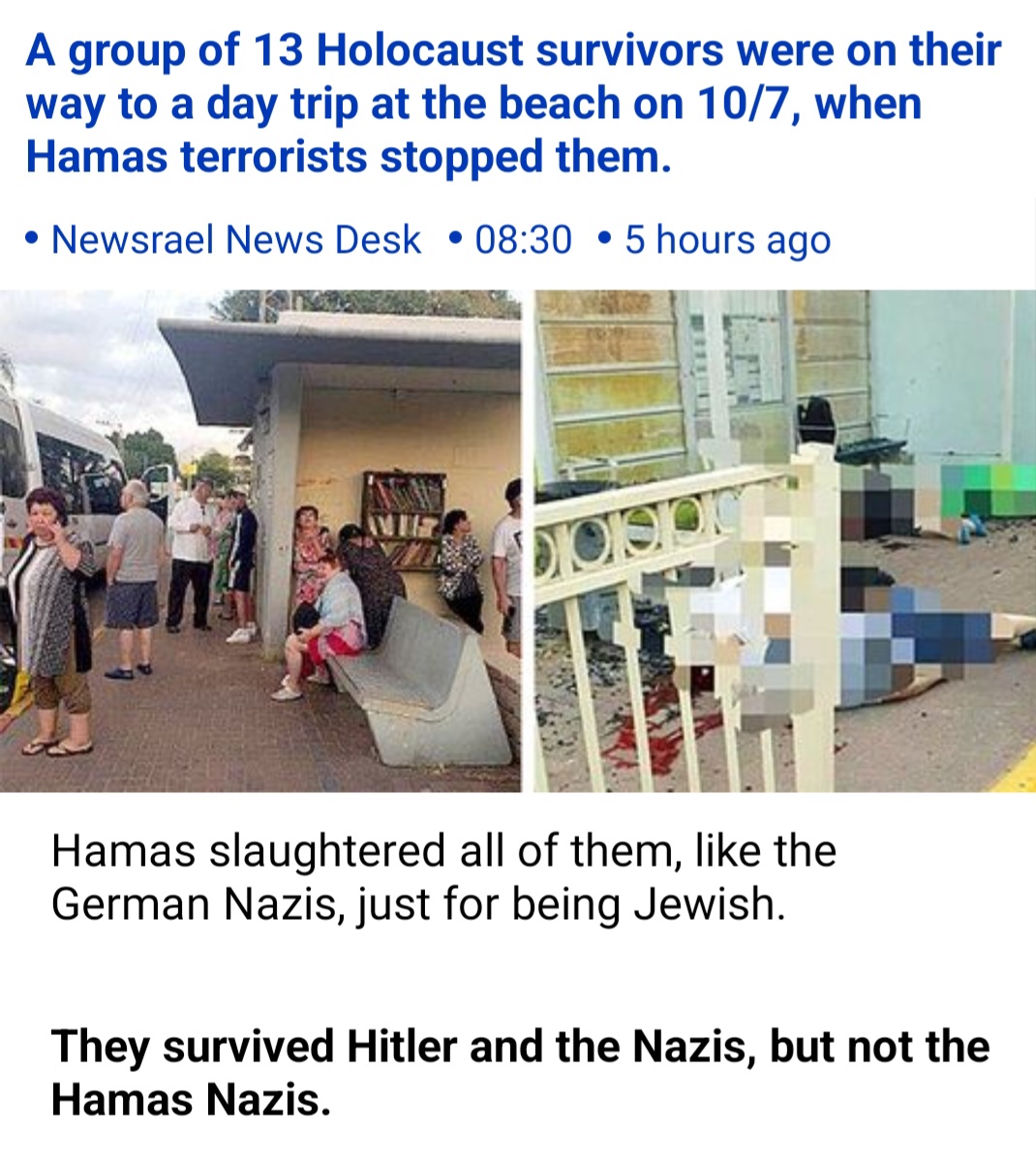
As we entered Sderot and turned towards the library, I immediately sensed where we were going to have our first memory: The bus stop where 13 Holocaust survivors were gunned down by the terrorists who infiltrated the city and swarmed the streets looking for the most vulnerable on their hunt for Jewish blood. It was shocking to stand there knowing this exact spot from a photo circulated of the survivors waiting for their group bus to take them on their day off to the Dead Sea, and then another photo of their lifeless bodies strewn across the sidewalk.
The quiet of the small city was eerie, and the empty streets echoed with the faint sounds of videos watched of the attacks that day. Most have heard of the fierce battle that took place at the police station, and over 30 police officers lost their lives. Few have heard of the stories of the people in the streets, in the apartments, on the sidewalks and in the gardens.
As we drove on, I could not help but think how destiny had brought me to this place, at this time, as an heir to Holocaust memory now transformed once again through the murder of those who had miraculously survived Hitler’s annihilation but not the hateful horrors of Hamas’ rampage.
Meeting the rabbi of Chabad Sderot and hearing how he has helped hundreds of families and individuals during attacks, it was a poignant reminder that we all have a role to play in the story of Jewish survival. Standing by the Chanukiah of missiles, the building marked with the impact of shrapnel and a hole of the missile still gaping in the driveway, nothing was lost on the irony of it all. Indeed, this is how the Jewish people continue to live in spite of how ruthless the threats against us may be.
It was in Beeri that we paid witness to one of the many communities shattered by the sudden ruthless attack on their innocent lives. The burned out houses, the remnants and shards of homes and hearts and whole worlds destroyed. Yigal told us his story - having by chance not been in the kibbutz that fate filled morning, but whose experience demonstrated the extent to which the loss is felt by every Israeli citizen. He shared stories more of the heroism than of the murders - perhaps because bearing witness to the unfathomable abuses were simply too much for this witness to bear. As he said, they were not his houses to enter, or his stories to share… Every one of us was moved by the tears of an older gentleman repeating again and again his story so that they could share it onward with others as a testament to truth.
BENJI
Experiencing the destruction of Beeri is something I will never forget. I couldn't believe that such a beautiful place could see so much destruction. How were they here for so long? How did they cause so much destruction? The highly trained Hamas Terrorists had taken up positions on the roofs. It was difficult to imagine the scene of Hamas terrorists standing on the roofs, or in the top floors of these beautiful houses, having murdered whole families, and proceeding to terrorize a whole kibbutz for hours on end.
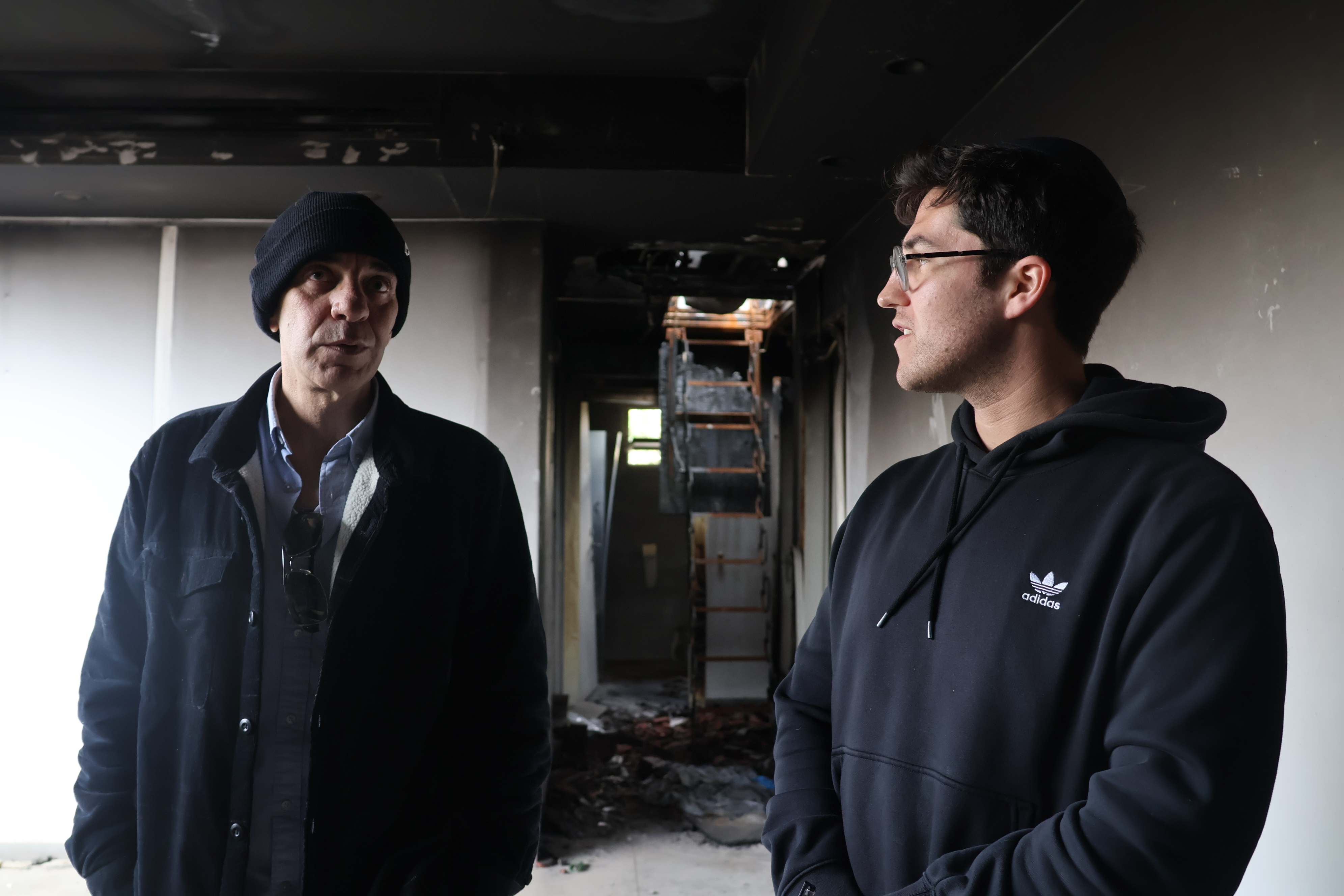
Hearing Igal, a resident of the kibbutz for more than 40 years, give over the story of his lifelong friends and their families murdered. People who grew up with each other, who were ‘like family’ to each other. It seemed like Igal was a person who once loved life. Seeing his destroyed house, his bikes, his consoles - stolen. His furniture, destroyed. Underneath the black soot covering the walls and furniture of his once beautiful, freshly built home - a mini paradise in the south of Israel.
As we stood with him in his home, it was painful to feel how broken he was. So in the dark and uncertain about what would be. It seemed his life had become one dedicated to doing, volunteering, giving tours - doing all he could to help in whatever way he could. And while he is certainly doing positive things in light of the most difficult circumstances, I could not escape the feeling that he was absolutely shattered on the inside - wondering how someone could ever recover from his.
As we were leaving, I asked about his daughter who was also fortunately not at Beeri on Oct 7th. "Where is your daughter staying now?" I asked. "In Herzliyah with her mom, my ex wife - but its not easy for her there. My ex-wife's daughter was killed too - in Nahal Oz."
I was left stunned at the level of horror and destruction families were going through.
We silently drove road 232, the now infamous stretch of pavement once scattered with the bodies of our brethren attacked in the most senseless manner. As we reached the site of the Nova music festival, our hearts were already heavy, or minds filled with the images, our skin pierced by the chill.
And we stood on the blood soaked earth of the Reim forest where the massacre began. We were surrounded by the faces of those murdered, those taken as hostage, those whose screams will forever echo and call out that their voices shall not be swallowed by their death. Staring out at the fields in the distance on the other side of the road, one could not help but imagine those running to escape, and those gunned down, brutalized by gang rape and beheaded by Gazan civilians alongside Hamas terrorists. We walked with uniformed soldiers and police who were there to learn and inherit. We met mothers of the fallen and fathers of hostages. We heard song, tears, and prayer as every Jew of every kind came together on these hallowed grounds.
DEBBIE
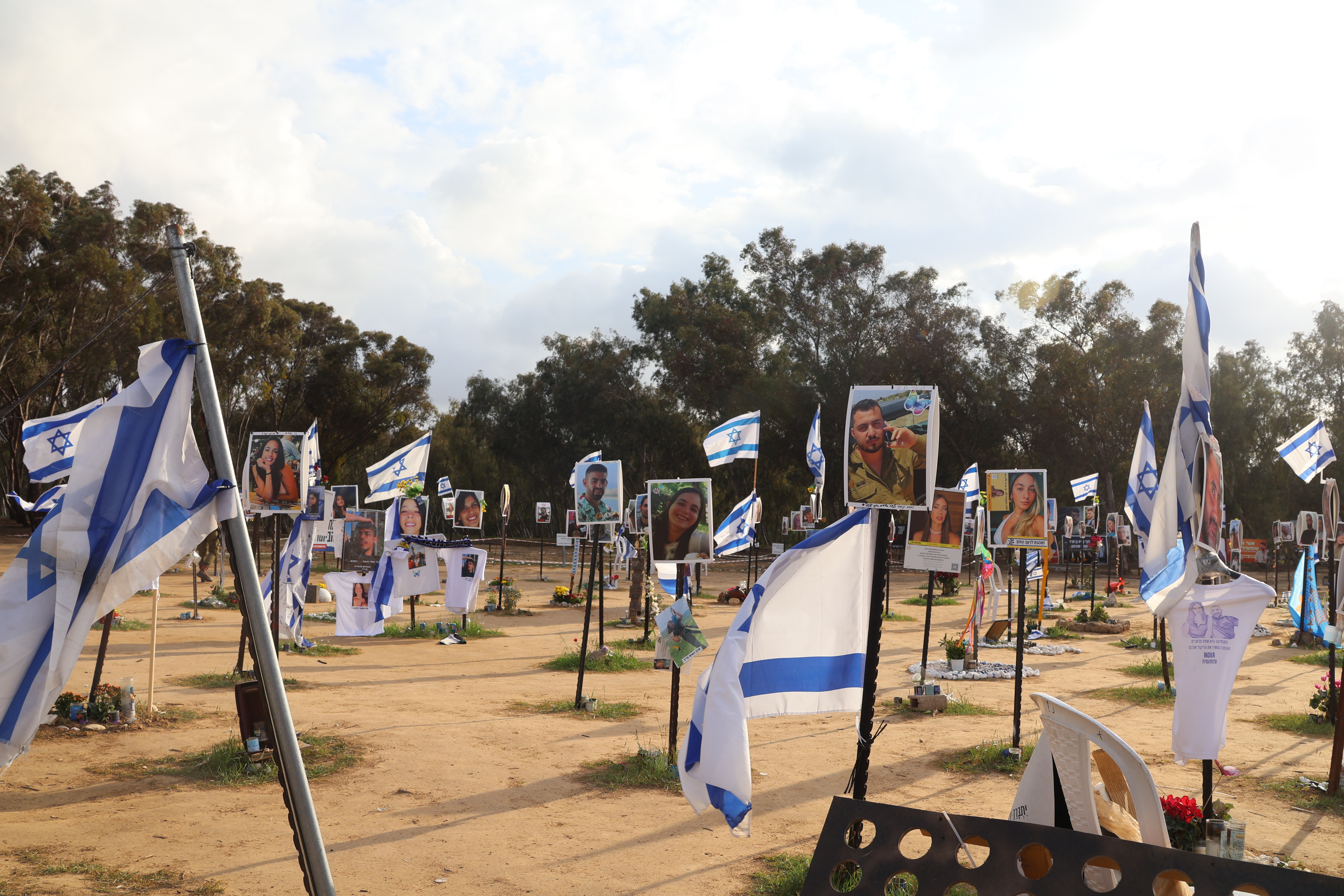
Walking through the placards of young faces, still on poles on the ground where one moment they had been dancing and the next they had been murdered, it was hard to ignore the average age of the deceased, 23,25,23,23,18,21,27,22… all so young and with so much life ahead of them, robbed in the most inhumane way. It became apparent to me that the memorial was designed in a way where the faces of the hostages still held in Gaza all stood on the circumference of the display of placards. In the short time I was there, saying a prayer for each of the deceased would not be possible; there were simply too many. But at least maybe I could go round to each hostage, look at the image of their face, and say a chapter of Tehillim for their safe return. As I approached the end of the display of hostages - 33 in total taken from Nova, I looked up and saw a camera crew. I walked behind it to listen in to who they were interviewing and soon understood this was the father of one of the hostages.
For me, the Sderot bus stops and the playground were very powerful, and every bus stop had a safe room, but most of the time, without a lock. Jewish trust and deterrence need to be rebuilt, and is anywhere safe?
The rest I am still digesting.
The ‘graveyard of cars’ was an unexpected form of witnessing. Each one of the burned-out and abandoned vehicles sits as final evidence of freedom enjoyed by the drivers and passengers who came to dance but found themselves praying they could make their way through the rain of missiles and machetes toward freedom. I am not sure I will ever see a parking lot in the same way. The sense of entrapment with no escape, that every car belonged to someone, symbolized a whole family's loss and personified the idea of freedom and then the loss of freedom with a brutal or fiery death.
I know it is my job to channel my identity as a witness to make sure their identity is remembered - the young and old, the moms and dads, the elderly and babies, those in the saferooms and shelters of homes and in the streets, those in their beds and those on bicycles. Those out for a run in the beautiful northern Negev on a peaceful Shabbat of Simchat Torah, and those waiting to dance with the book and celebrate our love, our life, our freedom as the Jewish people.
October 7 changed every single one of us. And it is our responsibility to ensure we do not let anyone deny, forget, or repeat this assault on Jewish human rights. No lie is as strong as Israel’s truth, and no generation of Amalek will succeed in uprooting the eternal nation - certainly as long as we have a free sovereign state - with all her flaws and errors of judgment - to defend us and ensure that the mistakes and oversights will not be repeated.
Listing the stops along our witness journey reveals very little about the power of the experience, and the lasting questions it leaves in our minds and hearts. The day was heavy and difficult and will never be forgotten. It was my opportunity to raise important questions about how to conduct visits in a respectful & appropriate manner, to encourage anyone who would want to embark on such an experience to take away something deeper that connects to our purpose as Jews living in this historical time.
Looking for a personalized discussion or program for your group of friends or community? Contact us to find out more about available opportunities.
To support the Witness Journey and other programs to protect Jewish memory, rights, and peoplehood, click here.



